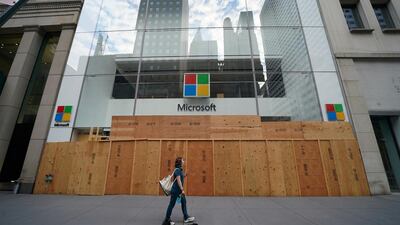
The new Microsoft Edge was released on January 15 last year. Reuters
The new Microsoft Edge was released on January 15 last year. Reuters
Quicktake: Why is Microsoft retiring Internet Explorer?
Launched in 1995, the web browser enjoyed a monopoly in the market for nearly a decade